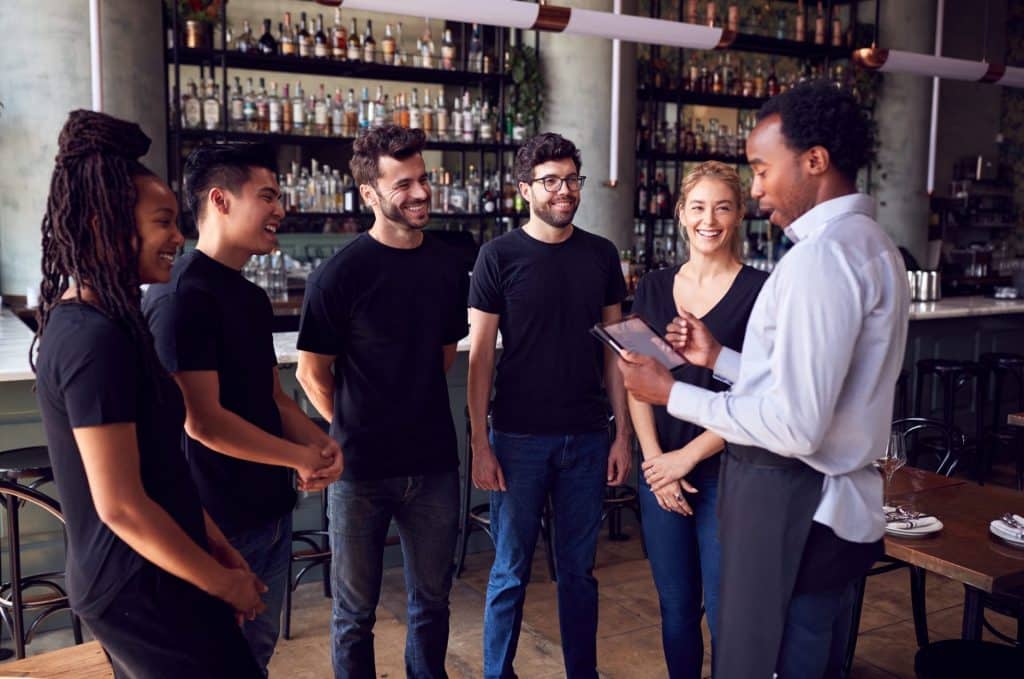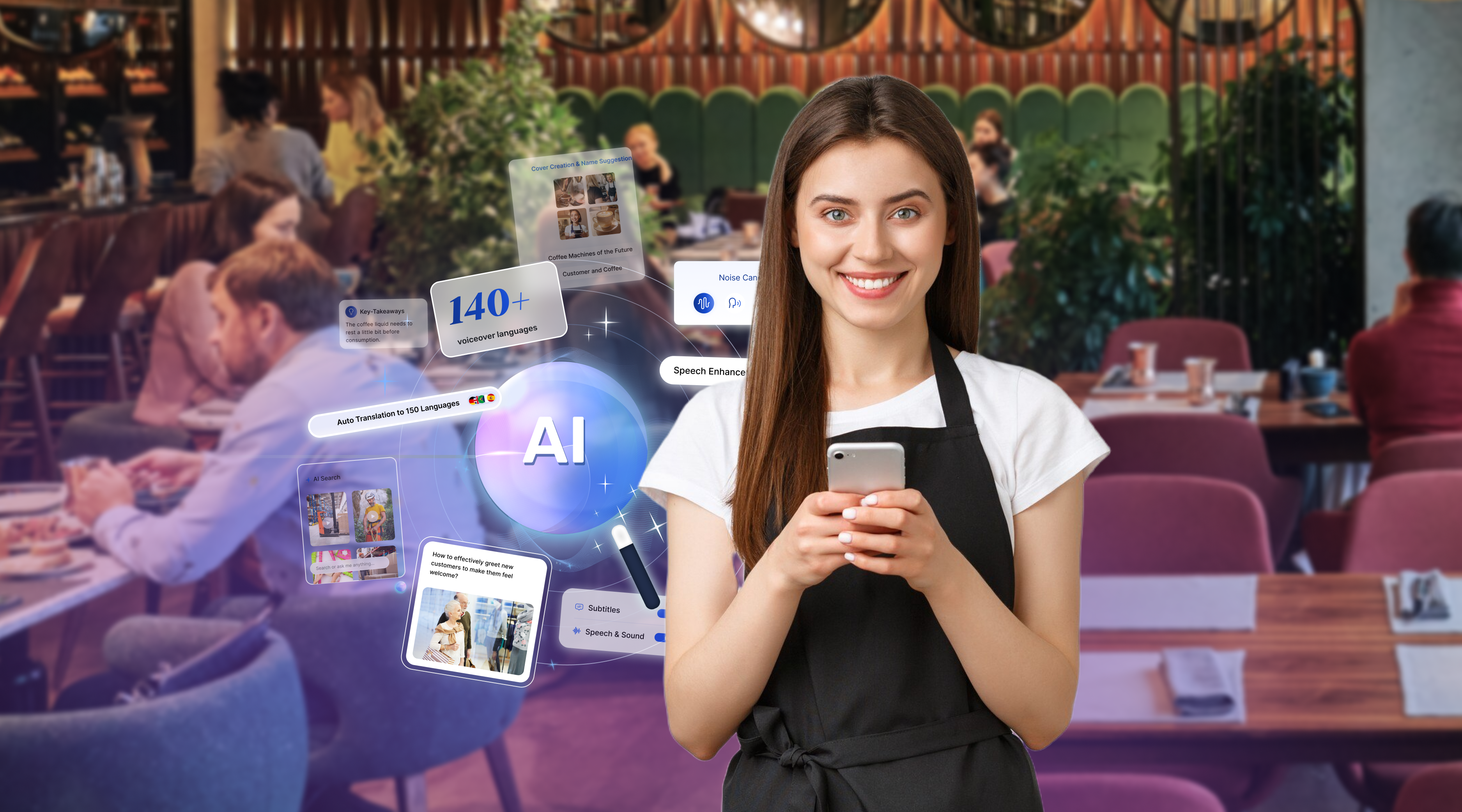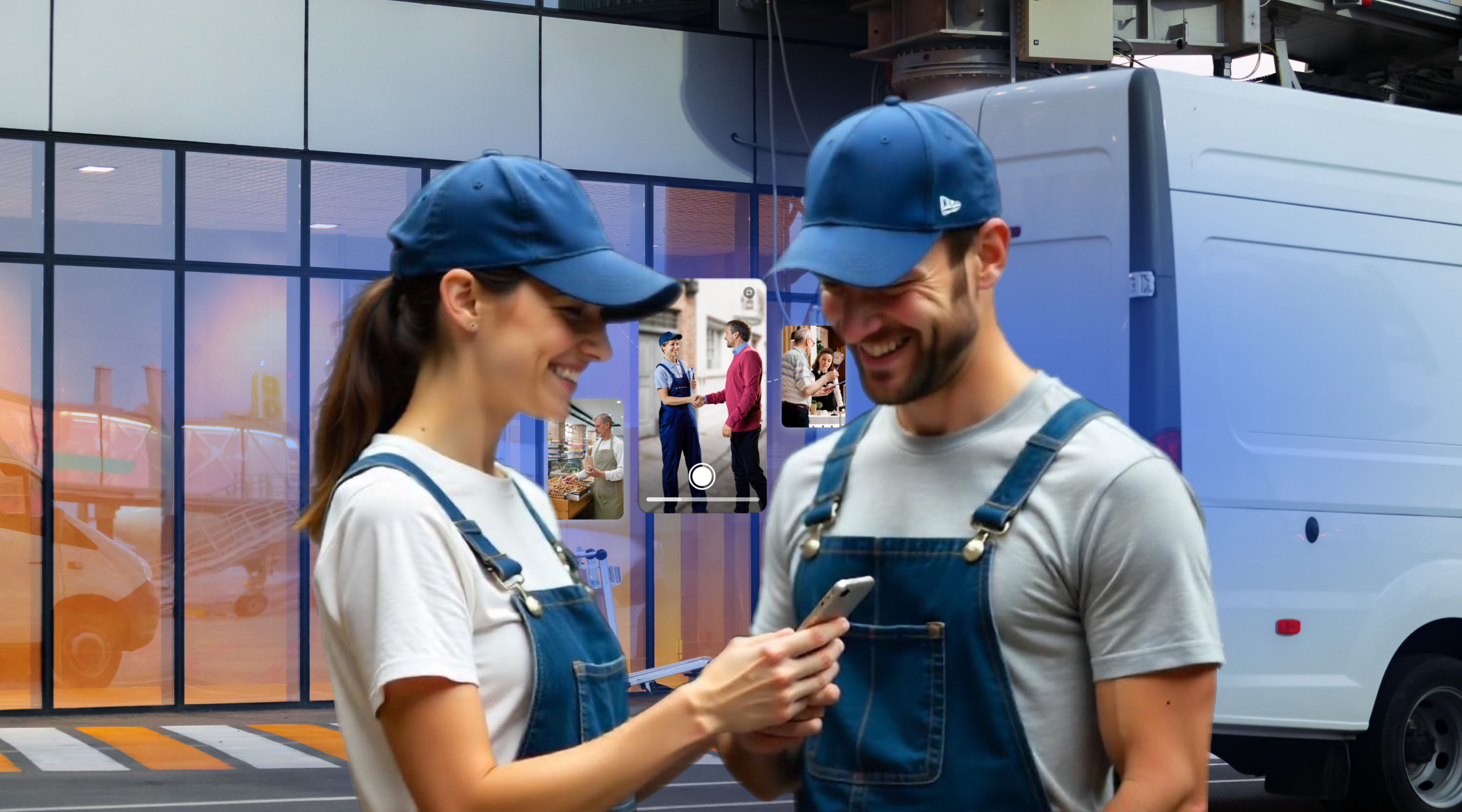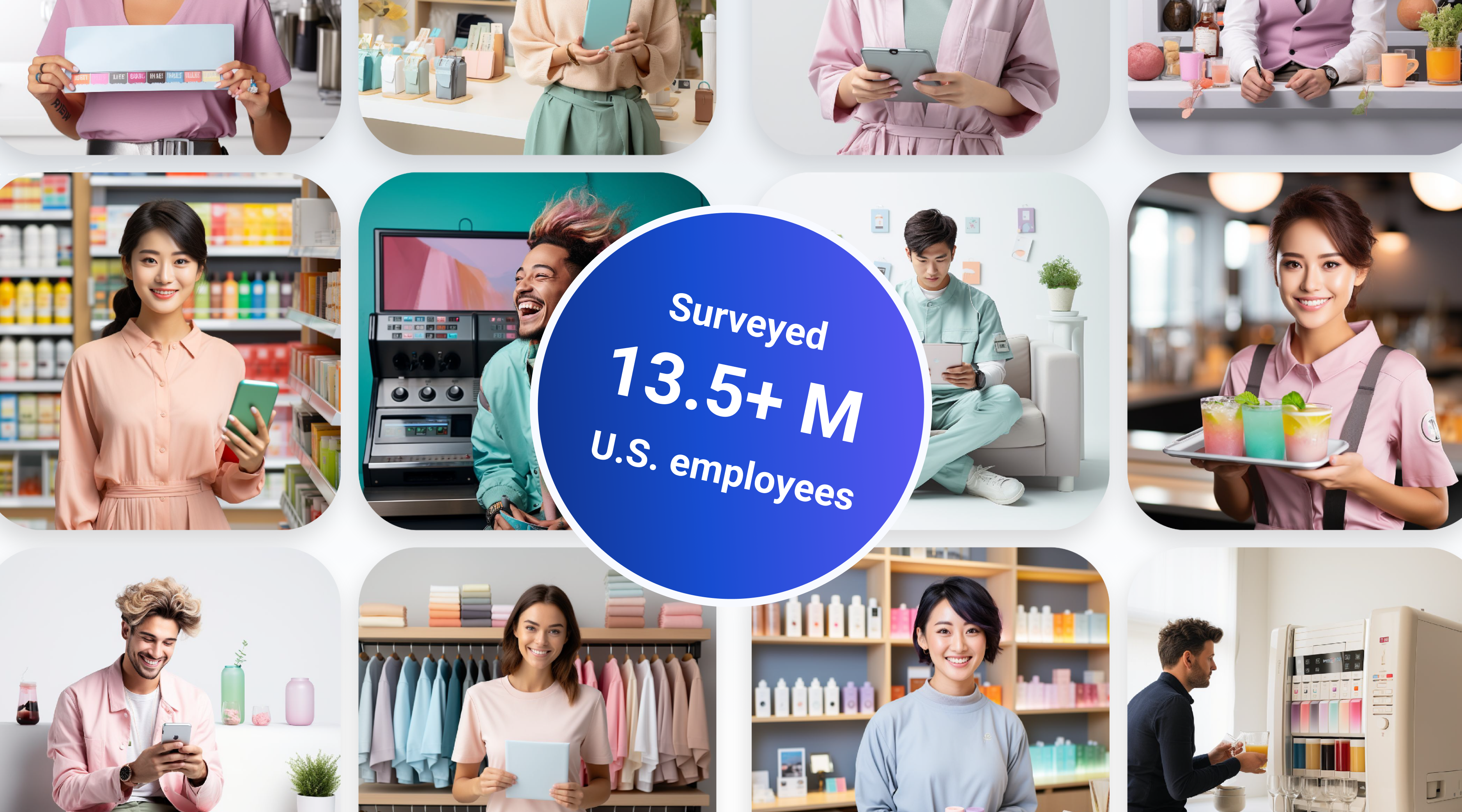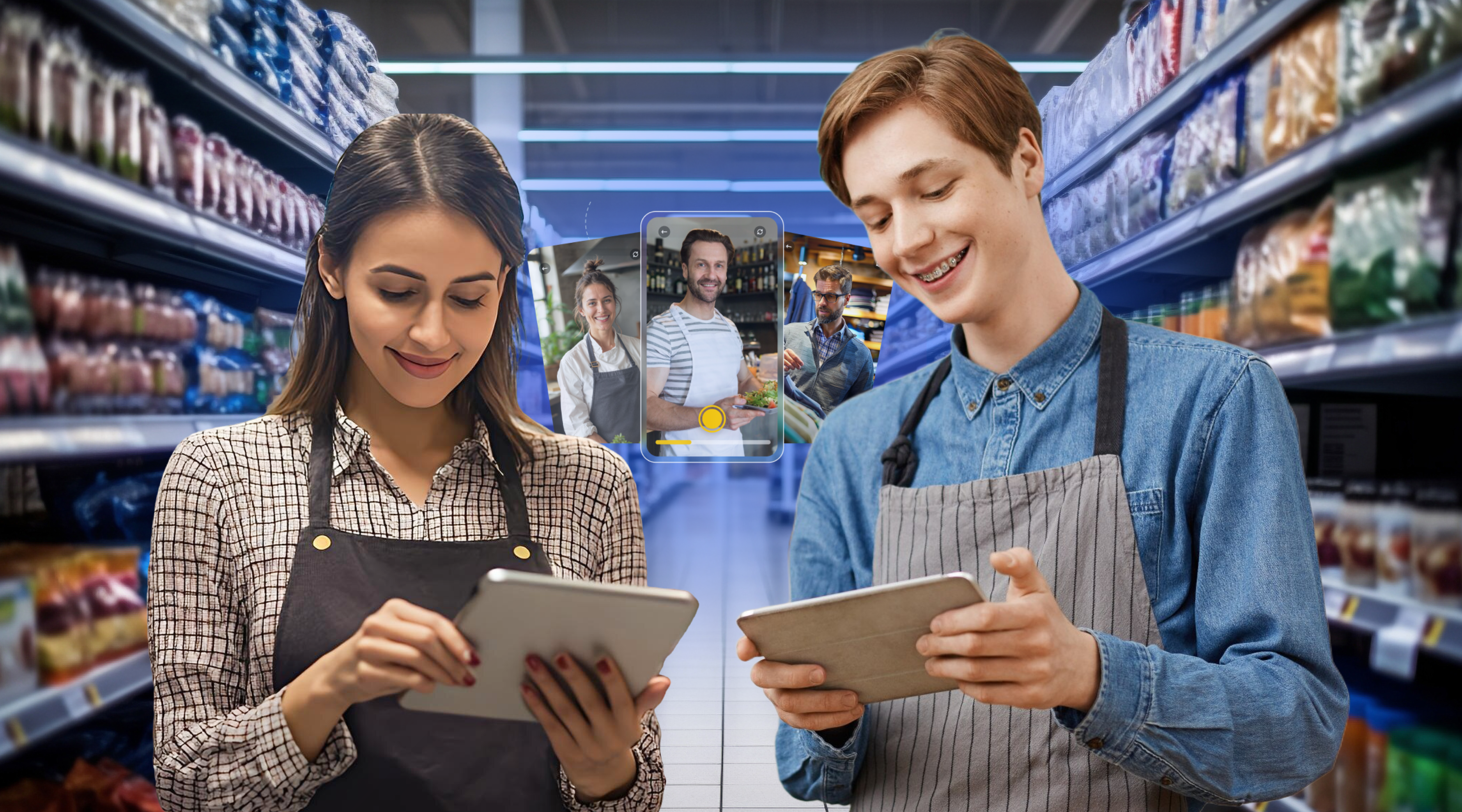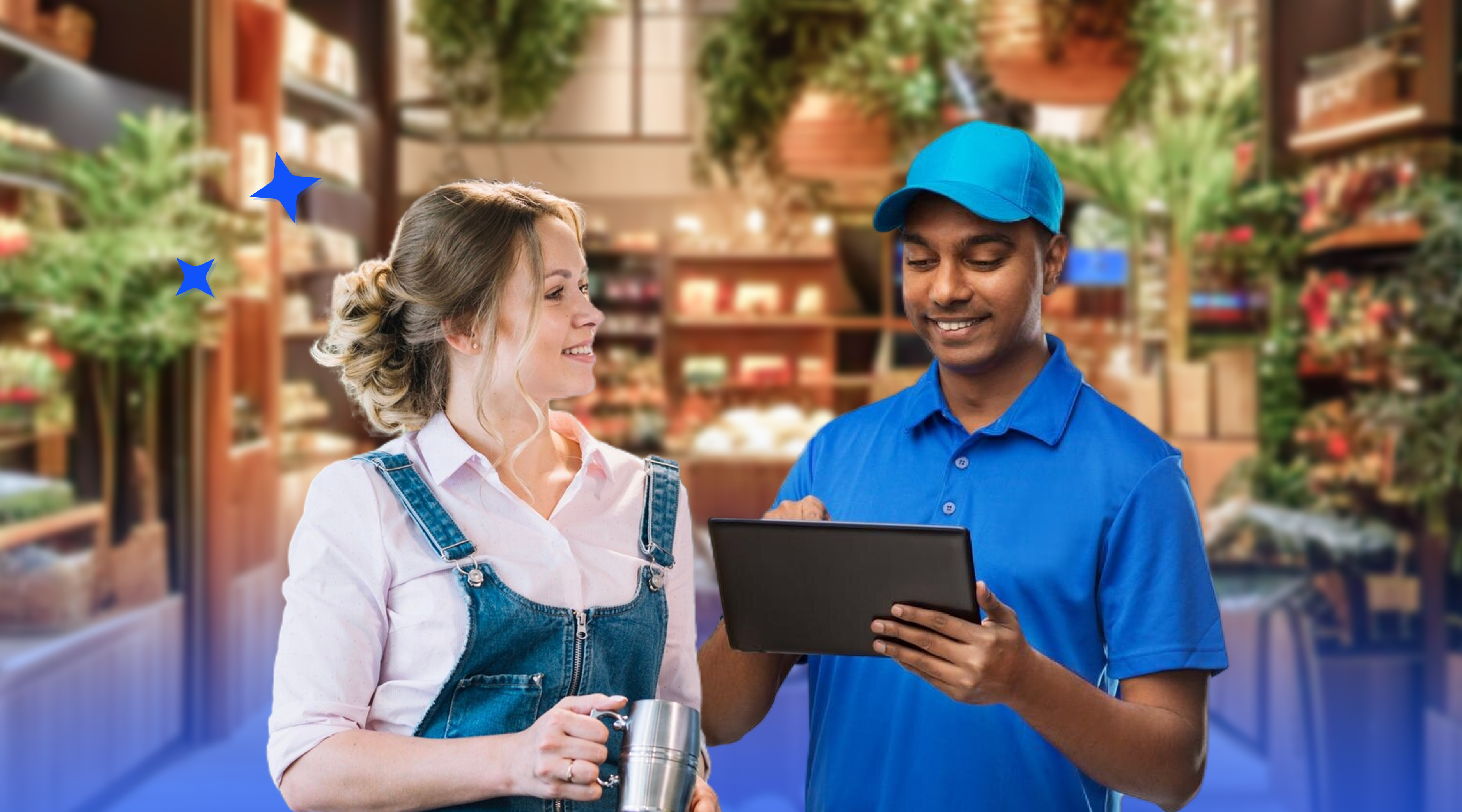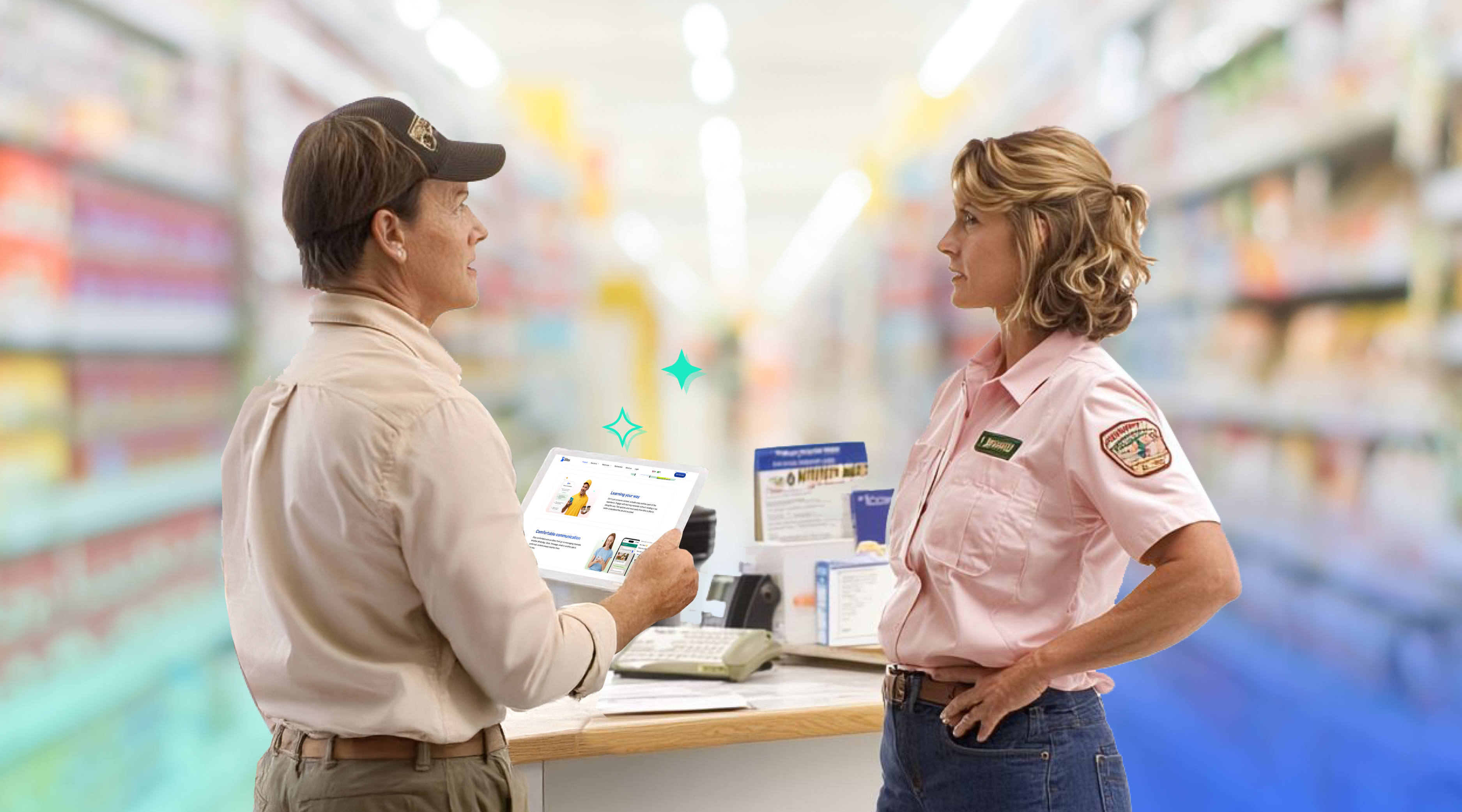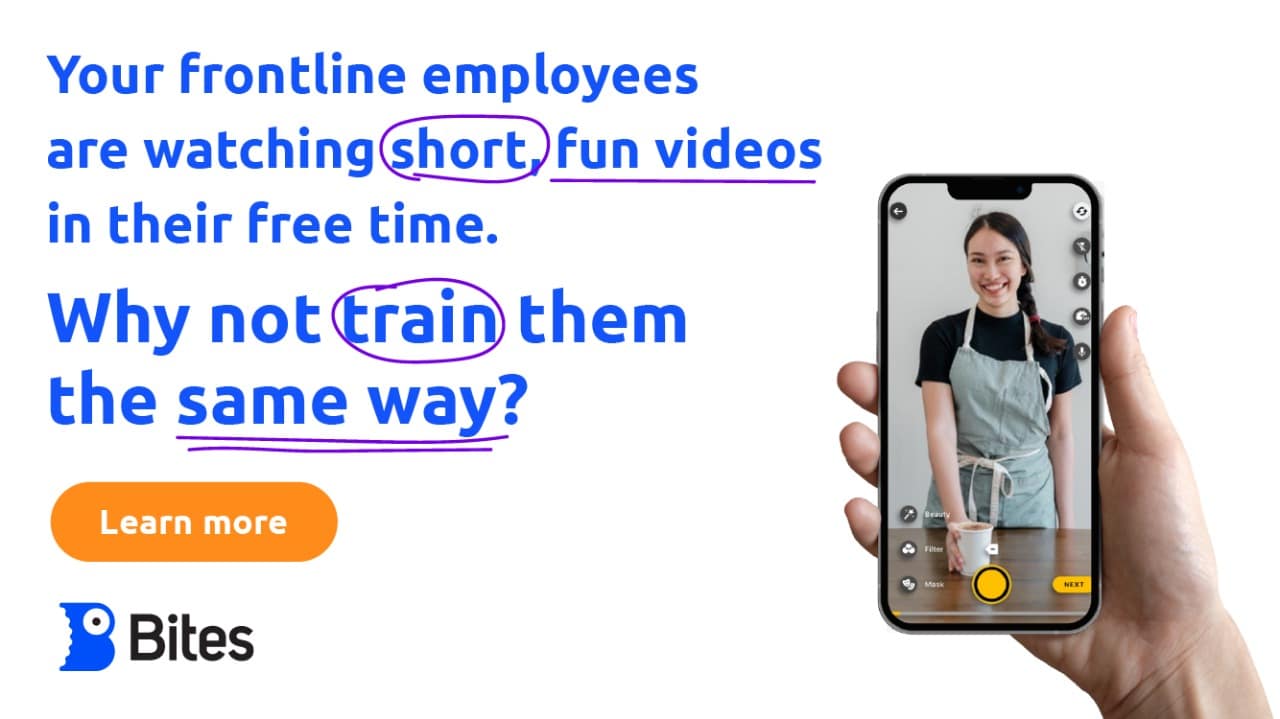“Training content, not training materials” webinar transcript part 2
Bites’ webinar about the importance of content creation – Training Content, Not Training Materials, hosted by Gili Fleekop – co-owner of Pink Chili social media agency and a TikTok creator, Tal Almog – COO and co-founder of Bites, and Courtney Sinnott – head of training and communication at Egg Harbor Café and an adjunct professor at the College of Lake County, Illinois. Courtney Sinnott is passionate about continuing education no matter what that looks like.
Some of the topics discussed with Courtney were:
- How does content fit into onboarding and training and development strategy?
- How to leverage content to make onboarding and training more engaging and efficient?
- What makes content great?
Read on the full transcription of the webinar.
Gili Fleekop: [00:29:31] how you and your team at Egg Harbor use content and how content is used within your organization?
Courtney Sinnott: [00:30:29] at Egg Harbor, we’ve been utilizing the content for about a year we use short form content for all menu trainings. Specifically, we use it for our limited time offer menus, which we call our LTO menus for short. we have a bite sized video for each item on the menu and after each video for every item is a short quiz, which is usually just about 2 to 3 questions. We just launched training plans that consist of bulk short form content that shows employees how to make every single drink that we offer. Once we have short form content for all of our food and beverage, we are going to start creating content that pertains more so to the different roles that we have in our restaurants, like our servers, our hosts, our cooks. So that short form content can help them grow in their role.
Gili Fleekop: [00:34:24] How does content fit into onboarding and training and development strategy?
Courtney Sinnott: [00:34:58] First, content’s role provides clarity. This way we communicate directly to the employee and ensure that they get the intended message and can set our clear expectations of what they should be doing and how to do it. It also provides consistency. the exact same menu item will be made consistently across all location and it really leaves just zero room for questioning and it prevents one store from making it one way and maybe another store for making it a different way. Lastly, it provides connection.It isn’t really easy for us to speak with and connect with every employee individually from the corporate level. But through these training videos with this content, we’re able to connect and demonstrate what it is specifically that pertains to their world.
The thing about content specifically is that, it’s able to provide everything that I mentioned being clear and consistent while connecting in an extremely quick, familiar, and relevant way. So, we strategically use this very limited time to make a large impact.
Gili Fleekop: [00:38:51] Where you see content fitting into onboarding. What goes into a good piece of content for an onboarding experience?
Courtney Sinnott: [00:39:22] We are planning on having these training plans of content for each individual role at the store level. We would take them through this front of house-training plan, kind of like this overview, understanding how these different departments operate, and how they work together in these different roles, then they’ll learn about the specific duties and responsibilities of their job. So, I think where we can leverage content is to utilize it opportunistically. So just using this barista example, if they maybe want to pick up some more shifts, but all of the barista shifts are taken, they can enroll in these training plans for other positions, maybe a host or a busser. And they can become competent in these roles as well and potentially pick up some shifts maybe. They can utilize this content that we offer for growth, which could have a direct correlation to monetary gain. And I think one thing that’s really interesting about using content for onboarding is that it’s different. Employees are so used to watching these endless, long, drawn out videos going over every and anything that there is to know about the company. But content is something that that they’re used to. They know what they can expect and they know that they can complete it fairly quickly. So, I think that the new hire experience content for their on boarding process, it would be refreshing, and this could potentially even lead to maybe longer retainment if they’re engaged right from the start, and they just see how easy it can be.
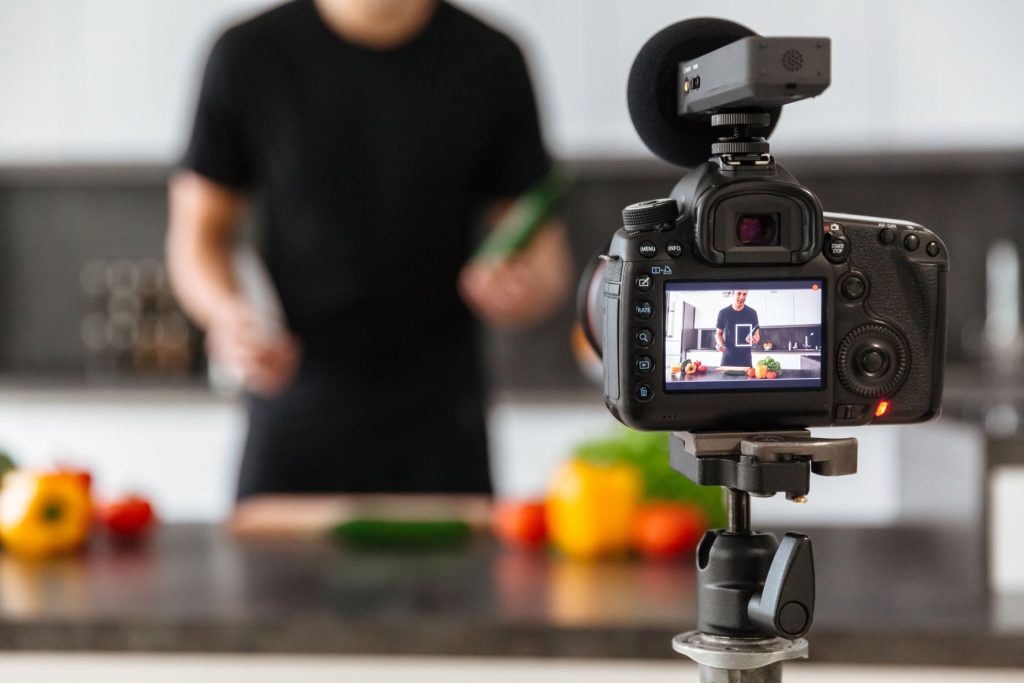
Gili Fleekop: [00:41:54] We all know that frontline employees and honestly, any employees in any organization are given tons of info when it comes to both product and procedures
How can we leverage content to make this process more engaging, more efficient?
Courtney Sinnott: [00:43:08] Using content solves so many issues, we don’t need to rely on managers, which not only saves them time, but we can ensure that it’s actually getting to the employees, that the information is getting to them. Employees don’t have to take this handwritten test that maybe is peer graded or graded by managers, or maybe it’s just done in a group setting altogether. Teams don’t have to stay after for a meeting where it might affect their home life or other responsibilities or make them late for a second job. But with content, employees are able to take it upon themselves to watch this content just on their own time. The power is completely in their hands. It also just ensures every employee gets the exact same information. It’s clear and consistent without losing the connection that you get from training and it’s trackable. We can ensure that those that need to be trained are trained.
Gili Fleekop: [00:47:00] Where do you see content fitting in internal and ongoing updates?
Courtney Sinnott: [00:47:52] In regard to communication, we utilize content to get very important high level, high impact information to the field and we just simply call these announcements. Now, this looks a little different than the content we’ve been talking about rather than content that mimics maybe a TikTok or an Instagram reel, this more so mimics like an Instagram or Facebook Live. We utilize these announcements for two reasons. One, by utilizing our LMS to send these messages to these employees, we can track and ensure that anybody that needs to get this message has, we can verify. The second is that if we have a very high impact, maybe even a very sensitive message that we need to get to the field, we want to make sure that it’s communicated the way that we intend for it to be.
Gili Fleekop: [00:51:29] I want to ask you a little bit about the impact that you’ve seen at Egg Harbor across locations, across teams, once you shift it to this content centered approach and also how do we measure success?
Courtney Sinnott: [00:52:26] There’s quite a few ways that content is impactful. First, it just saves management so much time. Short form content is concise, it’s snappy and it’s to the point and it should be easy to absorb in a few minutes or even seconds. And also, while in the field, training is important. Content is something that employees are just used to seeing and it’s so easy for them to train themselves on their own through these short bite sized videos. Our hope is that our employees want to improve their skill set and maybe one night, instead of them scrolling through social media, maybe they’ll watch how to make some of our menu items instead.
Courtney Sinnott: [00:54:00] Regarding success, this is just something that we’re still working on, and we’ll probably always continue to work on because we ourselves are just always learning and growing. We’re seeing just this big shift in the L&D industry that we’re seeing in training in general I can say in my experience in both high education environment and the corporate training environment, there’s a difference between learners and students just memorizing information and understanding it.
The key is to focus on long term memory, and that’s measured through changed behavior rather than just simple knowledge. There’s a book called Microlearning: Short and Sweet, it mentions the neuroscience of learning, and that its aim is to help the learner remember the material and lead to a positive behavior change. In our case, that behavior change is then being able to perform these tasks that are required for them to do their job.
Content shows the behavior, again in an extremely quick, familiar and relevant way. It models exactly what it is they need to do or how to behave. The success of content really lies just in the hands of our learners. One way to really measure the specific success of content is how often the learners are having to refer back to the content. And if it’s often, maybe we need to change and improve the content. But what’s great is that it’s a small risk. I mean, it takes 30 to 60 seconds to re-watch it.
Gili Fleekop: [00:57:41 What makes content great?
Courtney Sinnott: [00:58:04] Content is such a creative expression. This world is full of creativity, and it’s so great that we have this new vessel for people to express that. From a learning and development perspective, it just should be simple. The material covered is not necessarily material learned. People’s brains work best when they’re not overloaded because your memory can only handle so much information, so less is often more.
It should be relevant. We want our learners to keep coming back, and we don’t want them to walk away thinking that it was a waste of their time. And it should keep their attention. Keep the clips just within the content short and maybe speed up longer processes to still show what needs to be done but it doesn’t necessarily need to be shown in real time.
It should be enjoyable. Think of our learners as our followers on a social media platform. We want them to continue to follow us, so, how do we do that? By continuing to provide simple content that is relevant to their world, that keeps their attention and that they can enjoy.
